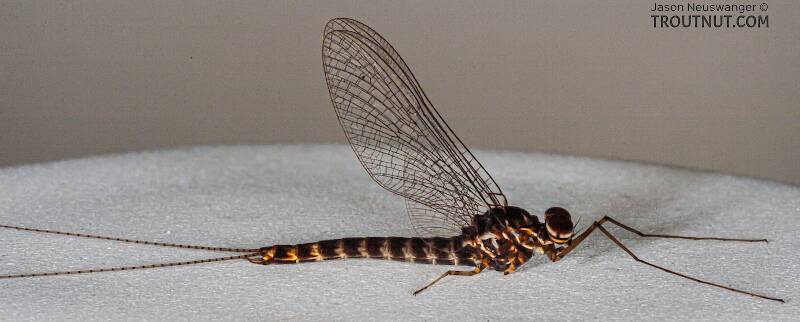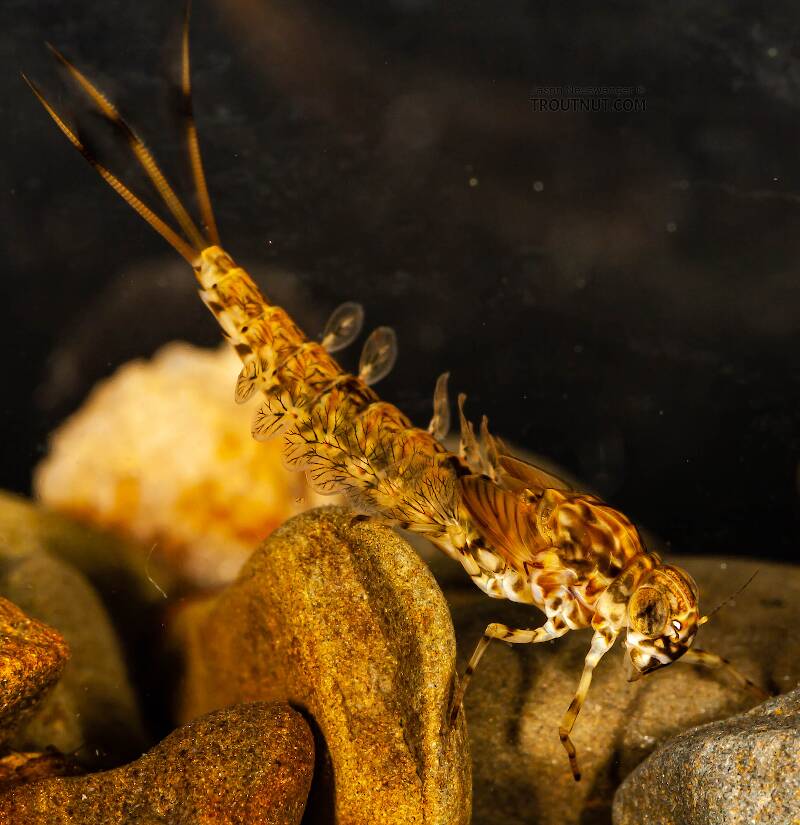
Blue-winged Olives
Baetis
Tiny Baetis mayflies are perhaps the most commonly encountered and imitated by anglers on all American trout streams due to their great abundance, widespread distribution, and trout-friendly emergence habits.
Featured on the forum

This specimen keys pretty easily to Onocosmoecus, and it closely resembles a specimen from Alaska which caddis expert Dave Ruiter recognized as this genus. As with that specimen, the only species in the genus documented in this area is Onocosmoecus unicolor, but Dave suggested for that specimen that there might be multiple not-yet-distinguished species under the unicolor umbrella and it would be best to stick with the genus-level ID. I'm doing the same for this one.

Troutnut is a project started in 2003 by salmonid ecologist Jason "Troutnut" Neuswanger to help anglers and
fly tyers unabashedly embrace the entomological side of the sport. Learn more about Troutnut or
support the project for an enhanced experience here.
Black Drakes
Like most common names,"Black Drake" can refer to more than one taxon. They're previewed below, along with 5 specimens. For more detail click through to the scientific names.
Mayfly Genus Siphlonurus
These are very rarely called Black Drakes.
The important Eastern species are Siphlonurus quebecensis, Siphlonurus alternatus, and to a lesser extent Siphlonurus rapidus. All may produce fishable spinner falls, often with more than one species in the same swarm, but these are generally localized and minor events compared to the classic superhatches.
The main Western species, Siphlonurus occidentalis, is much more valuable. Its importance in the West is often compared to that of Isonychia in the East.
The main Western species, Siphlonurus occidentalis, is much more valuable. Its importance in the West is often compared to that of Isonychia in the East.
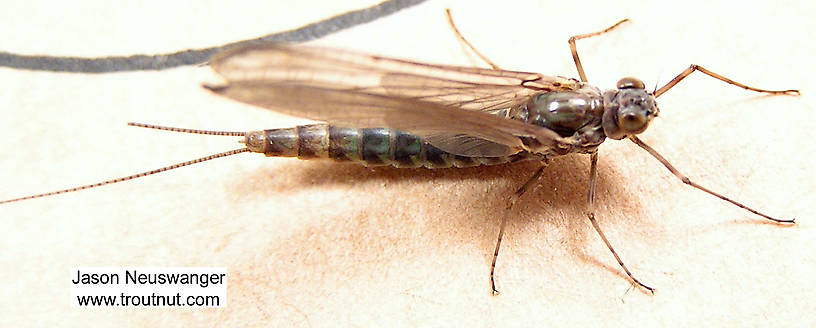
This one hatched in my house after I brought some nymphs home to photograph.
See 21 more specimens...
Mayfly Species Ephemera guttulata
These are very rarely called Black Drakes.
Ephemera guttulata's size, numbers, and hatching characteristics have made it a favorite of fly fishermen since the sport first came to North American waters.
It is on par with the Midwest's Hexagenia limbata hatch for its ability to lure huge piscivorous brown trout to eat insects at the surface once a year. The special charm of the Green Drake hatch is that it often takes place during pleasant spring afternoons. It can be challenging because the large flies are easy for trout to inspect in the daylight and they feed very selectively, especially late in the hatch. The huge difference in appearance between green drake duns and the spinners, white-bodied "coffin flies," makes them a peculiarity among major hatches.
The Green Drakes are on the decline due to environmental degradation.
It is on par with the Midwest's Hexagenia limbata hatch for its ability to lure huge piscivorous brown trout to eat insects at the surface once a year. The special charm of the Green Drake hatch is that it often takes place during pleasant spring afternoons. It can be challenging because the large flies are easy for trout to inspect in the daylight and they feed very selectively, especially late in the hatch. The huge difference in appearance between green drake duns and the spinners, white-bodied "coffin flies," makes them a peculiarity among major hatches.
The Green Drakes are on the decline due to environmental degradation.
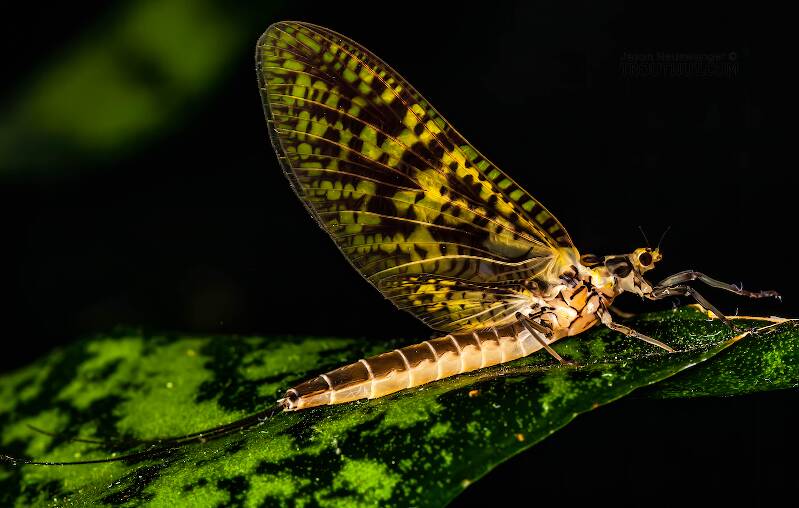
For years after I started this website, I was eagerly hoping to find a green drake to add to the collection, but I was never in the right part of the world at the right time. It finally happened on June 1st, 2007.
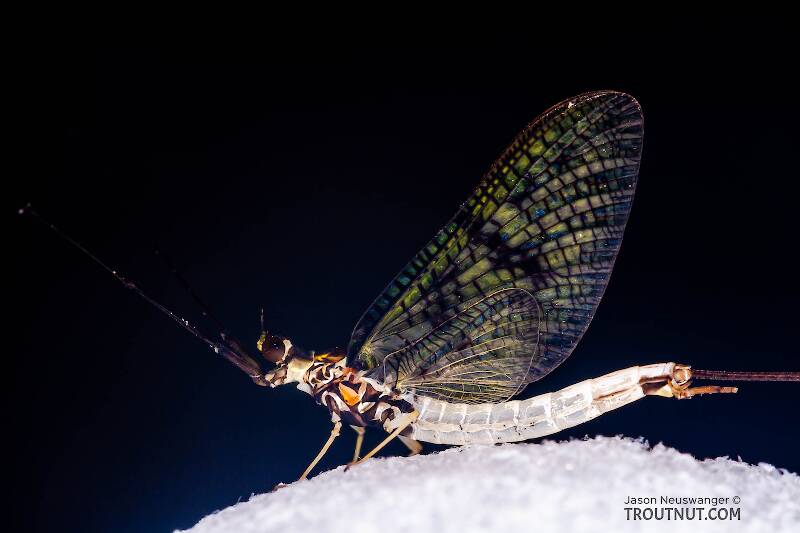
This spinner was the only member of its species I saw all night during an incredibly thick and tricky mixed hatch on Penn's Creek a few days before the real start of its famous green drake hatch.
See 1 more specimen...


